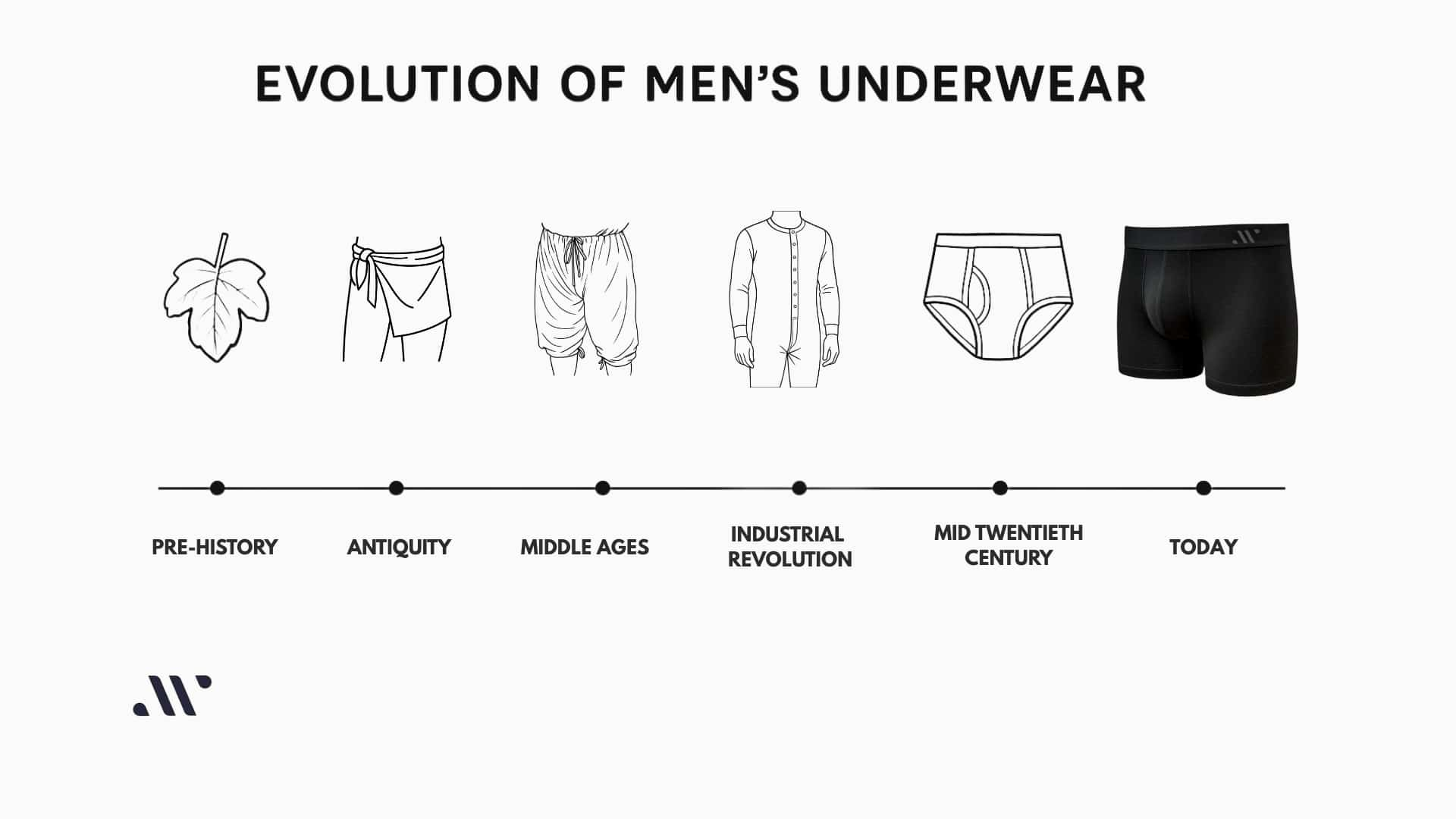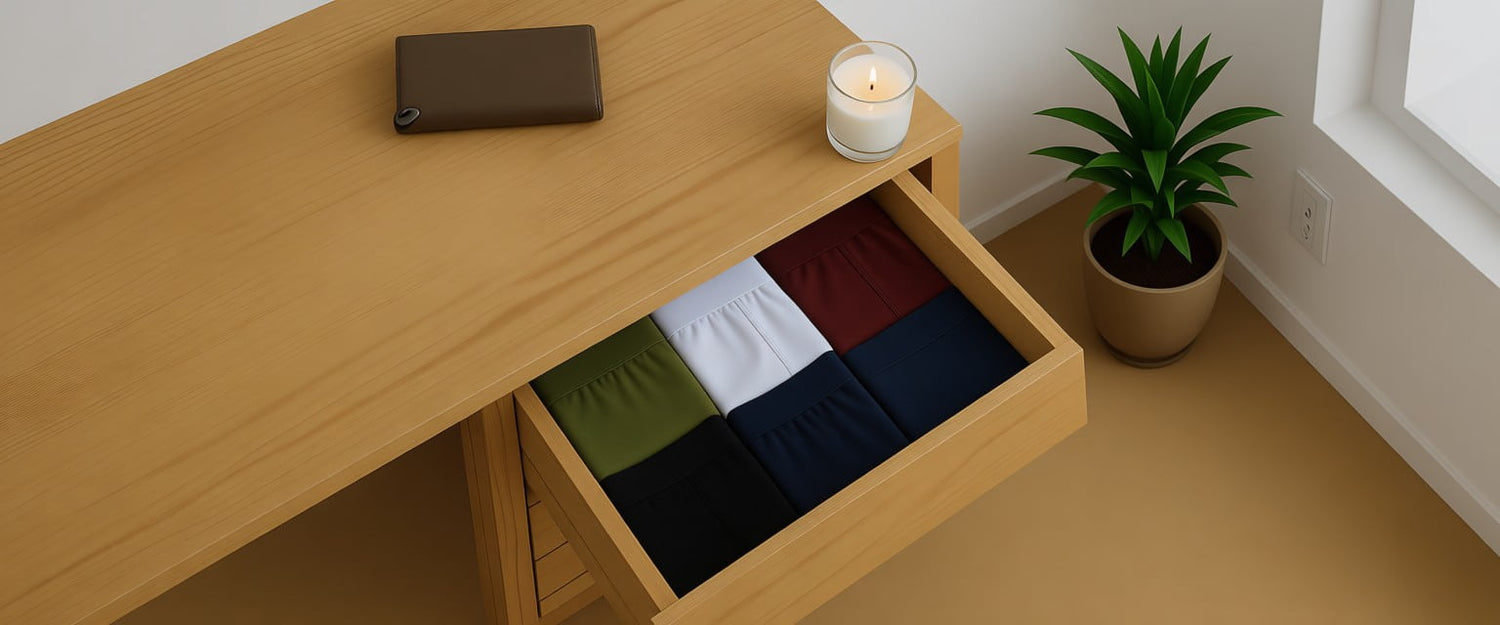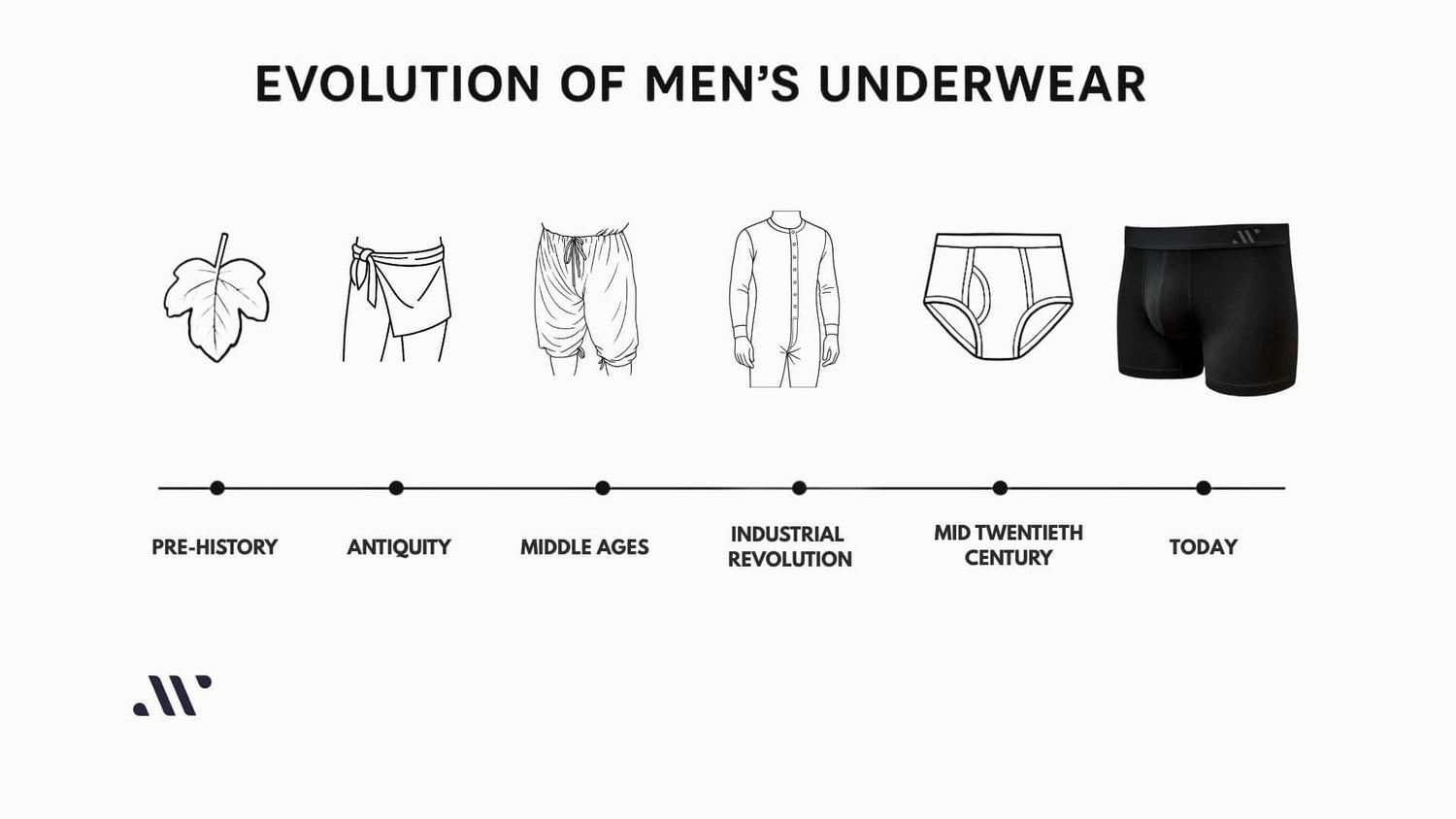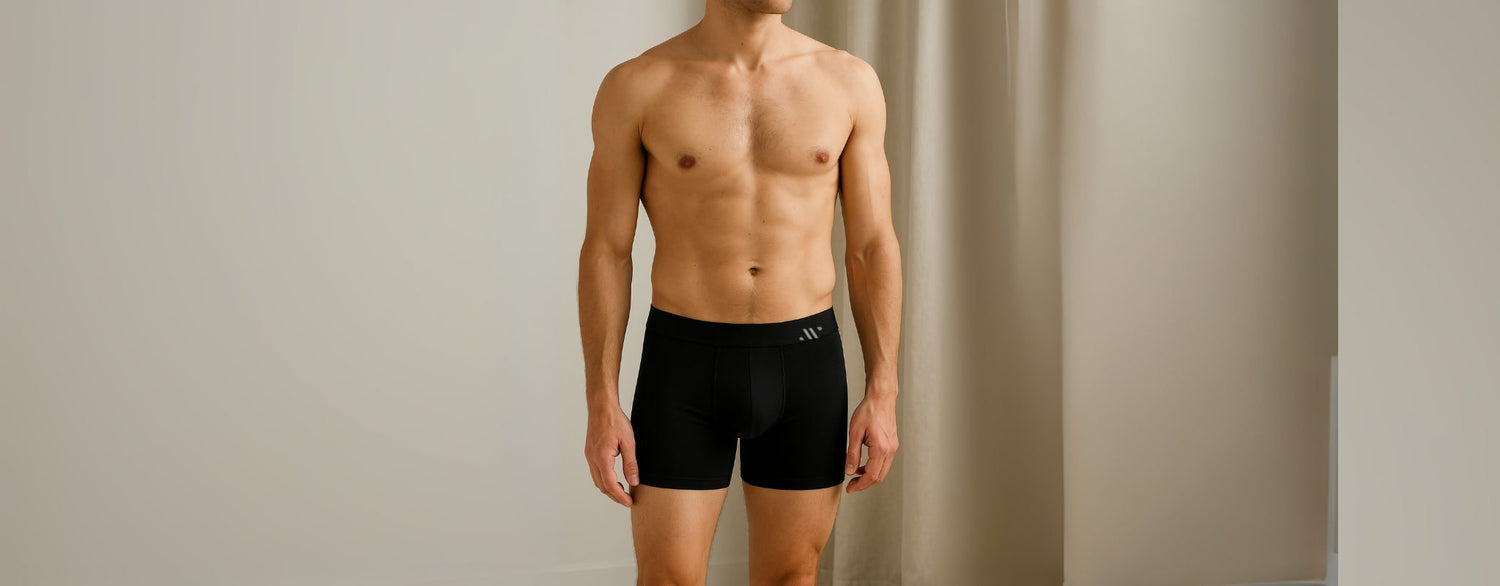The Original Purpose: Protection, Not Fashion
Boxers or briefs? It’s a question we’ve all heard. But have you ever wondered how we arrived at the modern choices in men’s underwear?
Long before style and branding took center stage, underwear was created for practical reasons: protection, modesty, and hygiene. The fig leaf may be more myth than reality, but it’s likely early humans used available materials—leaves, bark, and animal hides—to shield sensitive areas from thorns, nettles, and harsh terrain.
Ancient World: Loincloths and Subligacula
As civilizations advanced, so did underwear. Ancient men wore simple loincloths or fabric wrappings made of linen or wool, as seen in Egyptian, Mesopotamian, Greek, and Roman art. These garments served both protective and modesty functions, especially under tunics or togas.
In Ancient Rome, the subligaculum was a common undergarment. The Latin roots break down as:
-
sub-: under
-
ligare: to bind or tie
-
-culum: a small thing
Combined, the word means: “a small thing tied underneath” or “a little garment bound below.”

Worn by gladiators, athletes, and laborers, the subligaculum was often the only garment worn during physical exertion.
Middle Ages: The Rise of Braies
By the Middle Ages, loincloths evolved into braies—loose linen trousers tied at the waist and gathered at the knee. These were ideal for movement under armor or tunics and far more practical for horseback riding than a loincloth. Braies were worn by both peasants and nobles.
They absorbed sweat and body oils, protecting outerwear and improving hygiene—an important leap in both functionality and health awareness.
Renaissance & Enlightenment: Drawers and Codpieces
In the 15th century, fashion changed dramatically. As doublets and hose replaced long tunics, underwear had to adapt. Loose braies gave way to drawers—fitted linen shorts with added functionality like flaps and buttons.
To cover the gap between the separate legs of hose, codpieces emerged. They began as triangular modesty panels but evolved into heavily padded, decorated garments—a bold statement of virility and status.
For the first time, underwear united function, fashion, class, and sexuality.
Regency to Victorian Era: The Enduring Drawers
The codpiece eventually faded, but drawers remained an essential undergarment well into the 19th century. Often paired with long undershirts called “shirts,” these garments resembled nightgowns and provided a protective base layer to absorb sweat and oils.
Interestingly, some men tucked the shirt tails around their groin and backside and wore them in place of drawers—a practical choice, despite the Victorian reputation for prudishness.
Industrial Revolution: The Union Suit
Innovation met utility in the union suit—a full-body undergarment popular among laborers and farmers.
Made from wool or cotton, the union suit provided warmth, simplicity, and featured a convenient rear flap. For the first time, underwear was industrialized, mass-produced, and widely accessible.
Early 20th Century: The Boxer and the Brief
The early 1900s introduced styles we still recognize today.
In 1925, Jacob Golomb of Everlast introduced boxers, modeled after trunks worn by professional fighters. When adopted by the U.S. military during WWII, boxers gained mass popularity.
Then, in 1935, Arthur Kneibler of Cooper’s (now Jockey) invented the Y-front brief. Inspired by athletic jockstraps and French Riviera swimwear, the brief offered lift, support, and practicality. The Y-front design became iconic, solidifying the brief’s place in history.
1970s–1990s: Color, Celebrities, and the Birth of the Boxer Brief
The 1970s saw the introduction of colorful underwear and synthetic fabrics like nylon. The bikini brief—popularized by Jim Palmer’s Jockey Elance campaign—introduced a sleek, modern silhouette with a lower rise.
By the 1980s, underwear went from utility to aspirational fashion. Calvin Klein’s iconic white brief campaign featuring pole vaulter Tomas Hintnaus made men’s underwear sexy and visible.
In the 1990s, the boxer brief debuted—a hybrid combining the length of boxers with the support of briefs. Popularized by Mark Wahlberg for Calvin Klein, this silhouette quickly became (and remains) the most popular men’s underwear style in America.
Today: Innovation in Fit, Fabric, and Sustainability
Modern men have more choices than ever—briefs, trunks, boxer briefs, bikinis, and more.
While cotton dominated the category for centuries, today’s leading fabrics include modal, bamboo, and recycled fibers, offering performance, softness, and sustainability.
At ALPHX, we believe underwear should work as hard as you do.
That’s why we offer:
-
Six waist sizes and two unique leg widths, for a personalized, tailored fit
-
Smart fabric blends—with 96% plant-based fibers—for breathability, comfort, and long-lasting performance
-
Eco-conscious values, including biodegradable packaging and carbon-offset shipping through our EcoCart reforestation partnership
Our mission is simple: To make underwear that fits and feels better—so you can move, perform, and live better.
From fig leaves to fit innovation, the story of men’s underwear is about more than coverage—it’s about confidence, comfort, and culture.
👉 Shop ALPHX Boxer Briefs
👉 Find Your Fit





